Seven lakes lie in a north-south series connected by the Shing river form the Marguzor Lakes (named after the village by the sixth lake). The river rushes down in rapids down from the seventh lake all the way to the first lake and beyond past the villages of Rashnar Payon and Shing before it joins the Zerafshan River which runs east-west along the eponymous valley. The imposing Fan Mountains form the backdrop to this magnificent scenery of contrasts. Turquoise water and dry brown mountains. We could recall past encounters with a similar contrast (the Altiplano Lakes in Chile's Atacama region come to mind), every one of them unforgettable.
We had crossed the first three lakes in the crowded and rollicking jeep ride the previous day and had had a leisurely walk along the cliffs bordering the fourth (Nofin) lake after being warmly welcomed by Jumaboy's family at their home stay. Exploring the upper lakes is a comfortable day hike from Nofin up towards the town of Marguzor. The 4x4 path ends at Marguzor village which is at the northern terminus of the 3 km long Marguzor Lake (No. 6 and seemingly the prettiest). The seventh lake (Azor Chasma) is reachable by the foot trail further up from Marguzor. It is possible to hike up Tavasang Pass (3300m) to the heart of Fan Mountains, but that would require multiple days.
We had the entire 9 km stretch from the top of the 4th lake to the top of the 6th lake almost all to ourselves. There were no other trekkers going in our direction on our way up. The solitude was only broken by the appearance of small villages with mud-covered houses which blended in with the brown landscape. We met several bright faced young boys who broke into a run on seeing us demanding to be photographed and grabbing our cameras excitedly. Some of the boys were smartly dressed in full black suits and posed self-consciously for our cameras. It almost seemed like a tradition for them to immediately strike a pose on spotting a foreigner. We encountered fewer girls and they seemed to be busy with housework. They wore no uniforms like the boys, but colorful patterned dresses. They too were eager to pose for photographs but held their enthusiasm in check. One particular duo (presumably brother-sister) displayed remarkably contrasting expressions - the boy's face losing its animation and freezing before the lens, the girl's relaxing enigmatically, making for a haunting combination.
We were both concerned and happy at the infrequent appearance of an occasional 4x4 vehicle. Happy that the serenity in the atmosphere was not spoilt by automobiles and concerned that we may find it difficult to find return transport back to Penjikent/Dushanbe tomorrow. We reminded ourselves that the whole point of this trip was to let things work themselves out without trying to tighten our grips on the future. Apart from boys going to school or shepherding cattle and donkeys and the occasional donkey rider, we seemed to have the entire Fan Mountains to ourselves. The day was sunny and cool due to the elevation (we went from 1800 m to 2500 m) and the appearance of the lakes kept changing constantly as the clouds passed over them. This (and the youngsters we met on the way) kept our cameras busy.
The fifth lake was relatively small compared to the others but none the less attractive with the upstream river snaking through a field of green (yet another contrasting color to the blue and brown) into it.
We did encounter a German couple trekking in the opposite direction and they asked us if we knew where to get transportation back to Penjikent that day. We had to confess our ignorance even though we knew we will eventually have to answer that question tomorrow. We exchanged notes on our respective trips. The German man had spent a bit of time in India on a project. When we asked him where, he said "It is not one of those well known places. You probably don't even know about it, Kharagpur". At the utterance of the holy word, V was ecstatic and revealed that he had been a student of the very institution several decades ago.Yet another amazing coincidence that Tajikistan seemed to be dishing out by the hour.
As expected, the sixth (Marguzor) lake looked the most imposing with its sheer size and the long winding path along its edge. A small detour off the path leads to a base camp consisting of a few huts and benches. It was deserted on this day except for a young boy on a shepherding errand with cattle. We enjoyed a snack from a vantage point above the lake before moving on. This stretch of the trail provided plenty of opportunities for photographs with the movement of the clouds causing the images to change by the second. We clicked on unmindful of the burden of sorting out the pictures later on.
On reaching Marguzor village at the end of the lake, we decided that we had had our fill (9 km one way) and turned back (with due apologies to the 7th lake) after another big snack (aka lunch).
Back at the home stay after our 18 km hike, we were served with tea and more apricots from the family garden. (Jumabhoy had given us a large bag of sweet apricots to take with us on the hike that morning.) We watched from the tapchan (outdoor dining area) as the whole family went about their daily chores. Jumabhoy went into the garden to dig up beets and potatoes for our dinner and his wife took over cooking them in the kitchen. The toddler in the house, little Gulruftor kept us entertained with her antics. Like us, she too spoke neither Tajik nor Russian, limiting her expressions to high pitched screams whenever she saw one of us. She would follow this with a little jig around the courtyard, her steps getting steadier by the hour, but still not steady enough to avoid frequent falls. After everyone had finished dinner, the couple sat with us to chat and even with our limited common vocabulary we had a decent conversation going. We told them about our travels thus far and when we showed them a few choice photographs, they were very eager to see them all! They were very fascinated by some of the images and others elicited strange unexpected reactions. For instance, their first reaction to Bagan's extensive pagodas was - "Kabristan" (cemetery) and it was not an easy task to explain that Buddhist pagodas did not have any bodies buried in them. Their curiosity was insatiable and they spent more time reviewing our photos than we have ourselves.
Another group arrived from Dushanbe and they had exciting news for us. Their guide, who spoke good English, told us that they had crossed into Tajikistan from Kyrgyzstan through the border crossing that we were intending to use to get to Kyrgyzstan. This meant that we could explore new territory (the Rasht Valley) when getting from Dushanbe to Osh (Kyrgyzstan) rather than retrace back to Khojand and use the complicated border crossing to Batken which involves messy Uzbek enclaves. Of course, our original route was to tour the Pamir Highway which would have used a different border crossing altogether. The Pamir Highway has been closed since July due to political disturbances and while the situation had improved since then, it was still inaccessible. We still harbored a hope that it would open on Independence Day (Sept. 9) and we could execute our original plan. We would just wait and watch and see how it turns out.
Our philosophy of letting things work themselves out held true that evening when Jumabhoy (this time interpreted by the other group's tour guide) approached us with a plan for tomorrow. A vehicle would leave for Penjikent tomorrow morning at 5 a.m. and would be right outside our home stay. Jumabhoy would wake us up at 4:30 a.m.(we wondered if he ever got any sleep or just took care of his guests all the time) and give us coffee and some, you guessed it, bread and apricots. So, we went to sleep, after enjoying the sight of the Milky Way on a clear sky, with the knowledge that we were taken care of with Tajik hospitality.

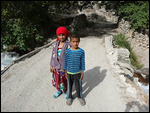

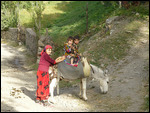
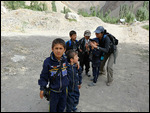
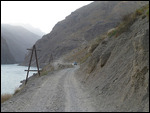

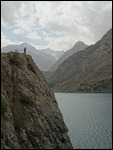
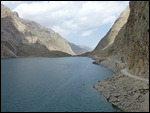
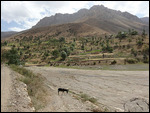


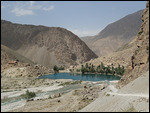
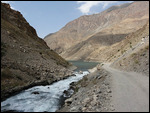


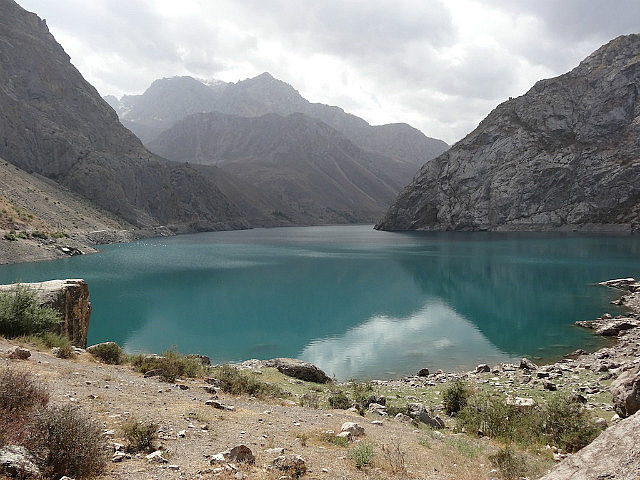
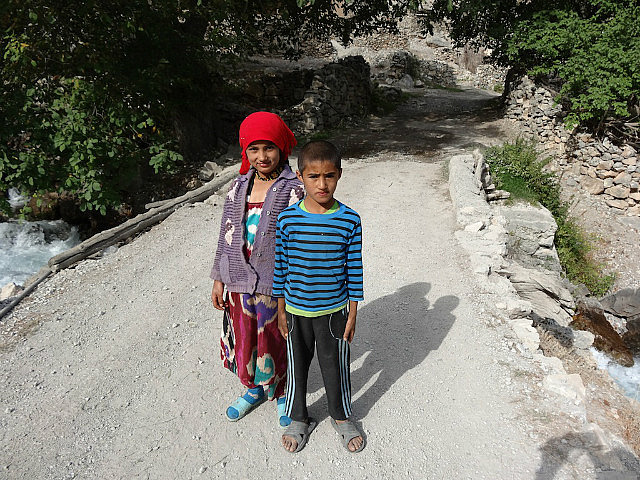
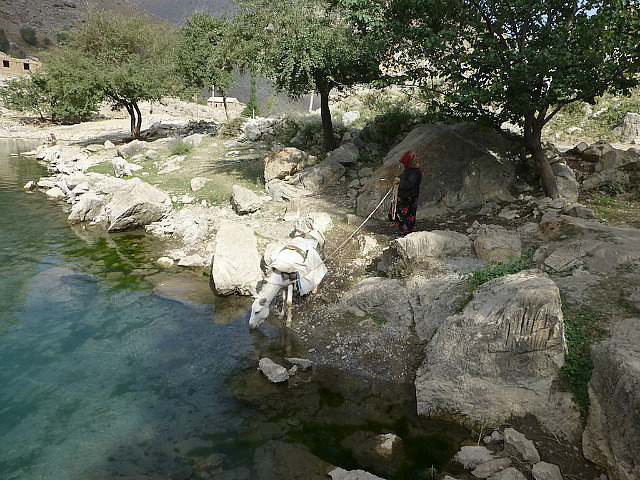

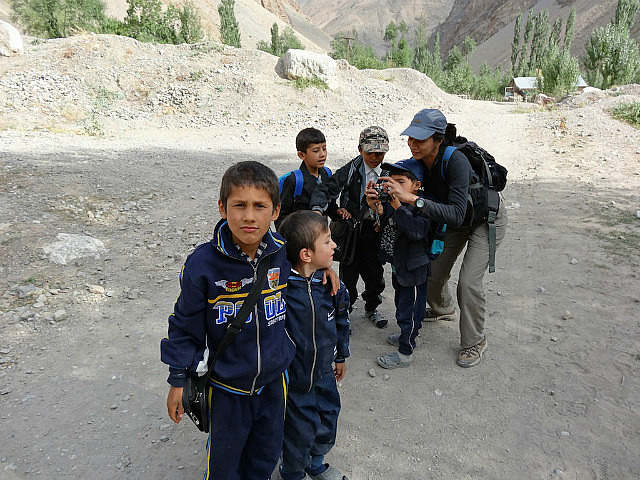
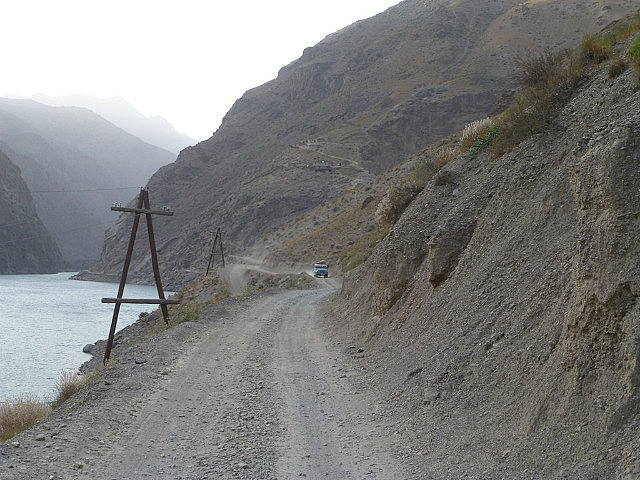
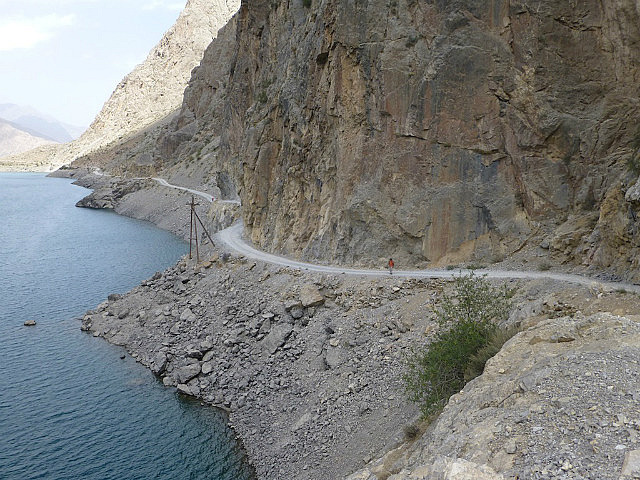
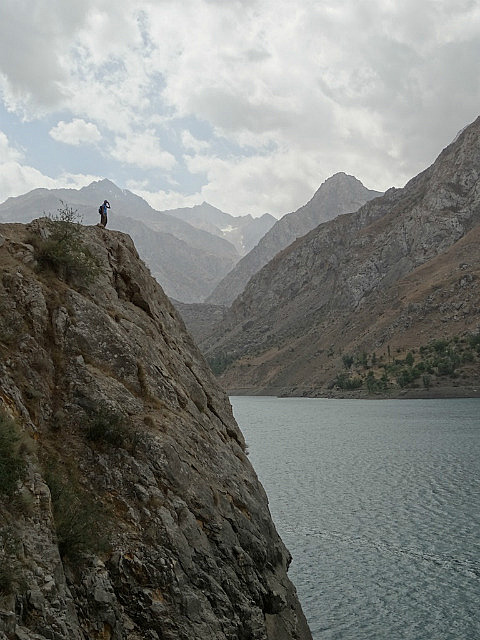
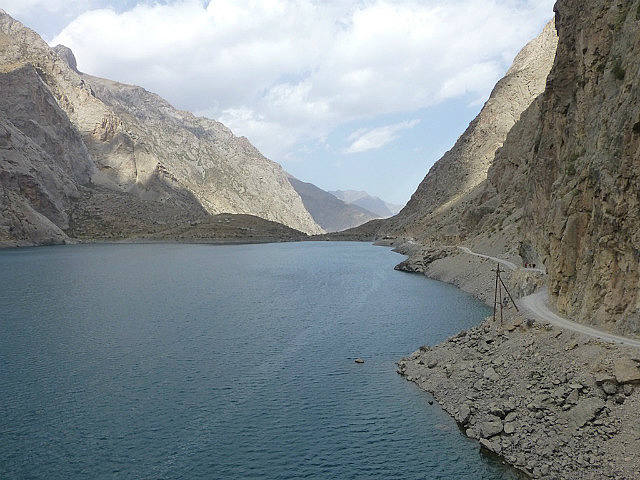
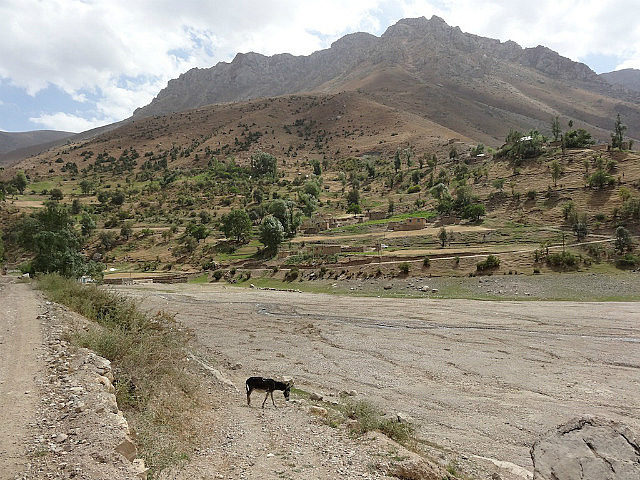
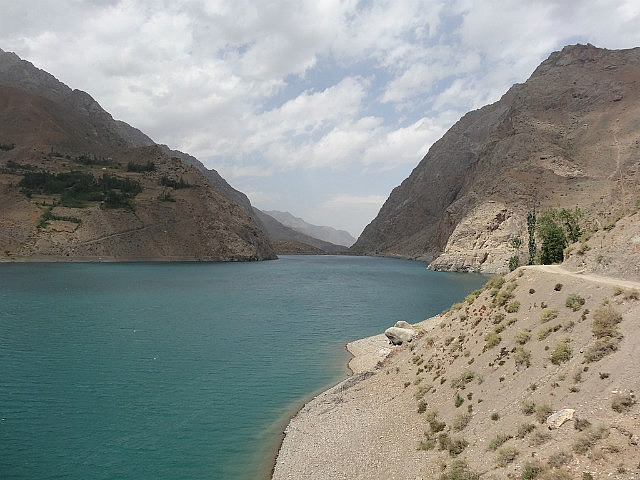
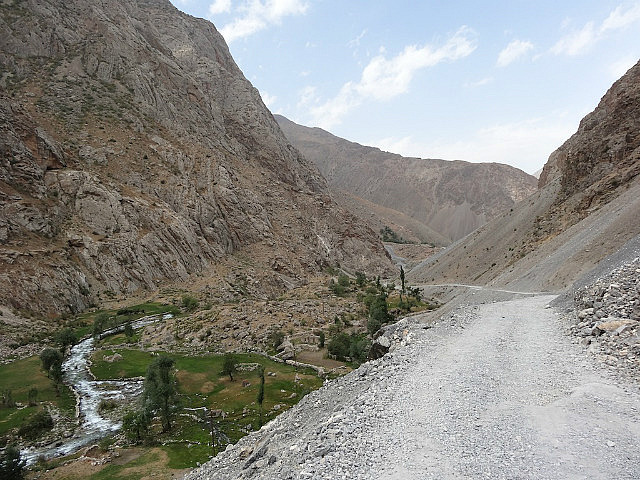
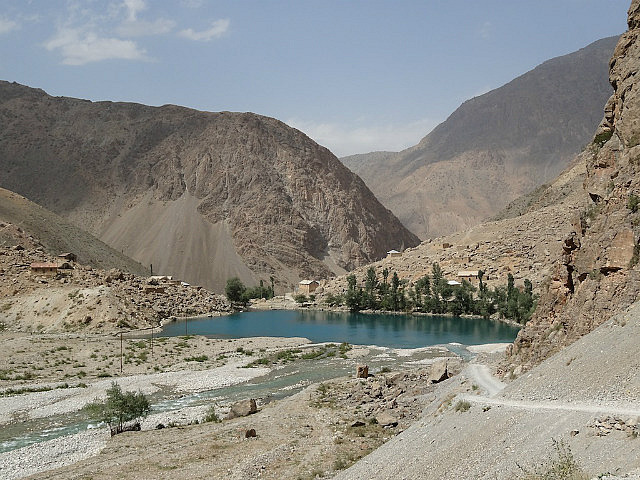
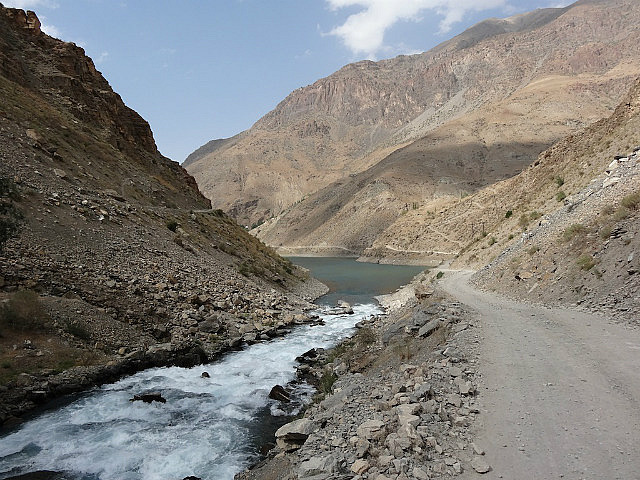
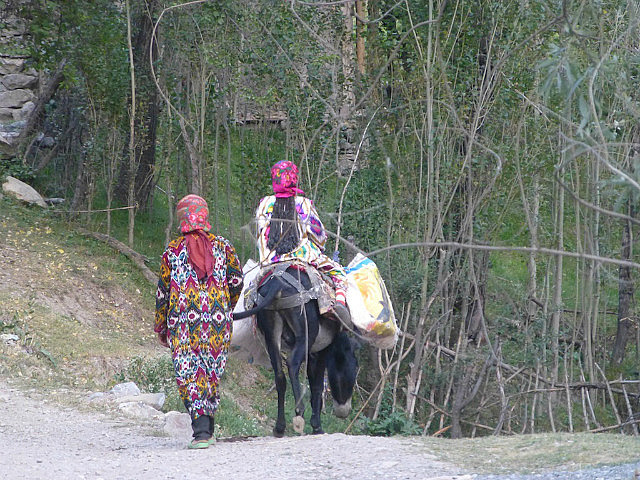
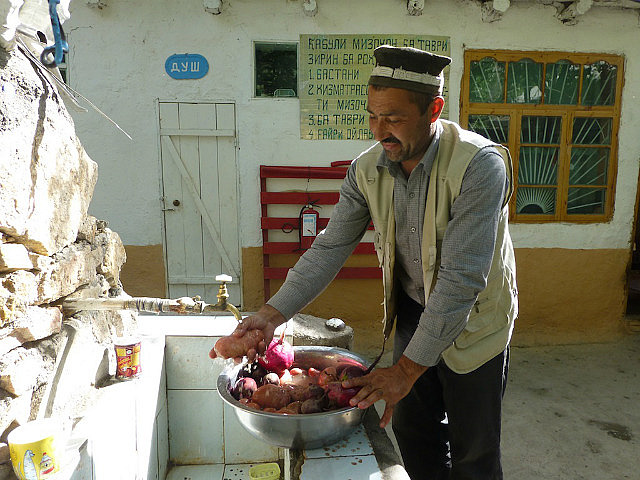
Comments